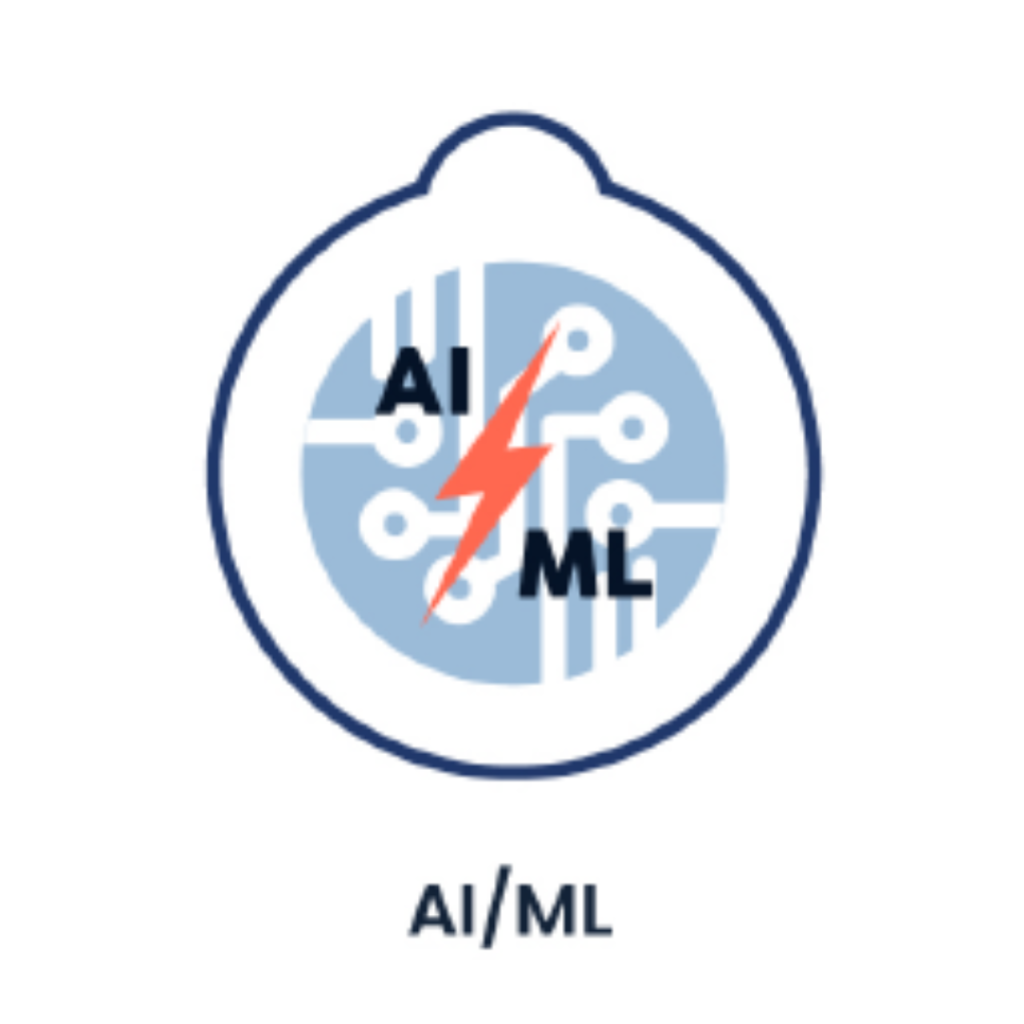How will AI change the private capital market two years from now?
If you were offered a 3 to 5-year forward view of the markets, would you take it?
Not talking anything illegal – just a potentially pretty good crystal ball.
I would take that look. I’d like to see an overview of the trails and peaks and the valleys to come. Sure, a detailed map would be better, but no one has that. I’ll take the closest thing to it.
For that forward view, look closely at a company that may be a vital participant in the market transformation from right now on through the markets five years from now.
Why is that not just bluster? Well, do you think Artificial Intelligence will make an important difference in those future markets? If so, then you may have a way to get that look forward. NOT by using AI but by watching what AI can do and what AI can be expected to do.
Of course, you can ask BlackRock or Goldman Sachs or J.P. Morgan or other companies with billions to – amazingly, yes – trillions under management. Their capital will make a difference in those future markets, but they all have various forecasts for those future markets. All these and many more make market predictions all the time, but those differ a lot, don’t they?
How do I get a look forward?
Instead of a company with an OPINION on the market, for that look forward, consider a company that is an example of the way MARKETS WILL BE CHANGED two to five years from now.
If I had asked Merrill Lynch in 2007 what the market was going to do, their forecast would not have included their own sale from a cash and confidence crunch in 2008.
If I looked at Amazon in 2007 and their business plans, they would not have included the Great Recession (of late 2007 to sometime in 2009) nor the COVID-19 Pandemic of 2020 recession. However, Amazon’s percentage of e-commerce and e-commerce’s share of sales continued to increase right through both recessions.
Watching a company that helped create economic growth and change gave you a better view of the markets to come than you could get from an economic and financial assets forecast. You can’t call highs and lows this way – but who can? You can call important dimensions of economic production and capital formation with it, though.
Amazon’s stock only went down 8% in 2008, while the S&P 500 was down 38%. In 2020, the S&P 500 was up 17%, while Amazon was up 76%! Watch a transformer to see where capital is going to be attracted. This article is not a stock tout but an invitation to get what may be a market look forward.
Don’t just invest in AI.
Even more, invest in a way that the market will be transformed by AI.
As we said, this isn’t an article about just one company. There are probably two others that you could get a partial view of future markets by watching. Not many, but a couple of others.
I think Pitchbook is probably one of them – not because of a forecast you might get from one of their analysts but by watching how they gather data using AI about companies affected by using AI. They are the authoritative source for information on private capital markets. Those private markets are where you see capital coming together and making new things that have newly created value. That’s the future of markets at their most basic fundamentals. So, look at how information is sought and used in those fundamentally creative markets.
Another company that’s less well-known but likely to give you some perspective might be Cyndx. They use AI actively to identify trends for capital investing in companies, not the short-term market trades, as much as the trail markers that show where capital is being attracted to productive economic potential. They also use AI to estimate the likelihood for particular companies to need and seek capital in the relatively short run. Both these uses are fundamental use cases for ways that AI can be expected to transform investing.
We’re the third to keep an eye on. We won’t hide who we are. We’re Alpha Hub by Konzortia Capital. We’re bringing market transformation using Artificial Intelligence and Machine Learning to source, match, and exit capital, connecting startups and others who need investment with investors who need to allocate their capital for premium returns. We use AI in ways fundamental to expected market transformation over the next few years.
What we most want to talk about here is seeing the direction of markets from watching the actions of companies that truly transform those markets. Watch what you might call the Capital Genesis Pointers – the way things are done in 1. capital creation, 2. allocation, and 3. liquidity – to see what direction those markets are taking.
We’re not calling these 3 Pointers the only important features of future markets. We are calling them VERY important, VERY likely features of future markets, and they are very helpful to keep an eye on if you want to know where those markets are going.

Pointer 1
Introduction – Artificial Intelligence will not only be used to make predictions about markets and companies. You could say Computers do that, but that doesn’t help you very much with a view of the future. “Computers” don’t tell you that something new is dawning. “AI will be used for market smarts” also doesn’t tell you anything new, either. But this does:
1.- Artificial Intelligence will shape the very structure of capital formation and market transactions.
With AI as it develops in just the next two years or so, we will begin to no longer be limited by the same information constraints we’ve always had. All that means to market transformation will only be obvious when we’ve seen them transformed, but if we’re looking in the right places, we’re likely to see those transformations earlier than almost anyone else sees them.
Market prognosticators still refer to the Dutch Tulip Bulb Bubble of 1637 to explain speculative excess today, but we don’t make investments now as we did then. You have to refer to basic human psychology (as important as that is) to learn anything from it and apply it to today’s market. And, depending on how much of our trading programs are run by AI, you might not be able to count on human psychology telling you much of the full picture. However, the market structure and market process have very, very little to do with the Dutch Tulip Bulb market of 1637.
Try to imagine capital decision-making that is unlimited by Big Data challenges with information processing’s boundless possibilities. Though we’re not talking about no ABSOLUTE limits, we are dealing with new limits far beyond any limit we’ve ever imagined. Relatively speaking, capital will form and move without the limits of human reasoning velocity or human data-handling capacity.
We aren’t saying we see no place for human creativity or human compassion or even uniquely human cognition, but we are saying that you better be prepared for investment being made without most human brain limits we’re used to.
At Alpha Hub by Alpha Capital, we are already seeing the practical difference-making that using artificial intelligence and machine learning can make for private capital markets.
Wait! Is this all a trip down the Science Fiction Rabbit Hole?
Actually, no. Take a small rabbit trail with us to see we’re not heading down a rabbit hole. Think for a minute about the difference between development and difference-making timelines. AI programming and its beginning technologies developed in corporate groups (it had begun to be done in academic research and R&D labs a good bit earlier) began roughly with Google’s purchase of the British Deep Mind startup in 2014.
That’s a 10-year development timeline to get us to where we are today. The difference-making timeline is from ChatGPT opened to the public at the end of November 2022 to today, when no industry and hardly even any company can make business plans without noting how AI will be fundamental to their process, now and much more in the next two years. That’s how much has changed in only nine months.
Look at history for perspective.
By historical standards, a decade as the timeline for development is an absolutely, unbelievably fast pace. Not even going back very far, we can see electricity as an example.
- Thales, circa 500 BC, describes static electricity and its properties. (begins to theorize about it)
- Development along modern lines for electromagnetic theory:
- Gilbert, 1600
- Volta, 1700
- Faraday, 1800
- Then, James Clerk Maxwell gave a fully formed mathematical view in 1865. But, importantly, cities still live by gaslight and candlelight at night
- Building on that developmental timeline, Thomas Alva Edison found breakthroughs not just with light bulbs but especially with electric utility infrastructures in 1880. Electrically lighted cities follow amazingly quickly afterward
Somewhere along the development timeline, the difference-making timeline explodes with forward progress!
So, applying that historical lesson, we see AI’s development timeline of a decade and difference-making timeline of six to nine months! Think of Moore’s Law for microchips, which sees doubling every two years for processors on a chip.
That law no longer applies because the direction for chip improvement today is not about the number of processors. But it likely won’t be long until someone develops a similar law for growth in the power of artificial intelligence. And it won’t be doubling, but it will be some exponential factor of advance. This is an Intelligence Revolution moving very quickly in its transformation of how we do almost everything.
It’s certainly not unreasonable to think capital markets and investing are going to be fundamentally transformed pretty quickly by the galloping pace of artificial intelligence.
At Alpha Hub by Konzortia Capital, we are bringing to market NOW through Beta release, and soon in 1.0 version, a practical platform tool to use the power of Artificial Intelligence for transformation in the private capital markets for profitable returns.

Now, take just a quantum moment or two to think about an even faster accelerator to change.
If you’d rather not do more of the science behind market transformation, please feel free to move on to Pointer #2. But science really does light the way for this change.
Two incredible technological advances will power these changes over the next five years or so. One, as mentioned above, is artificial intelligence, and the other is quantum computing. The two excitingly pair with each other for astounding advances, one powering the other while in tandem, they make a world-changing difference.
Digital computing uses mathematical Base 2, 0s, and 1s, logic gate open or closed, binary processing. That’s where computing “bits” comes from. “Qubits,” the fundamental ‘unit’ of quantum computing, adds all the values between 0 and 1.
How many, you say? Think of fractions, splitting that space between 0 and 1 into smaller and smaller slices. That’s right. By half? By sixty-eighths? By two millionths? You really don’t run out of fractional numbers between 0 and 1. You define the location value statistically rather than absolutely.
WHAT? Quantum mechanics describes the basic structure of matter and energy as statistical and probabilistic. The “wave equation” gives a range of more and less likely probabilities for where a particle might be and how it might be traveling. (Fun stuff: Heisenberg’s Uncertainty Principle comes into play, and things get weird fast.)
The point for us here, though, is best understood by thinking of computing power. If I make calculations by counting 0s and 1s through my microprocessor and my programming, I am limited by how fast my chip can count – how many cycles per second, how many petaFLOP operations per second. And chips doing that much cycling and counting produce an unbearably great amount of heat. I’m limited by how well I can cool my chips and even by whether I’m able to employ superconductivity to run that microcurrent through with no resistance.
If the ‘logic’ choices that carry information and guide my program aren’t limited, then clock speeds and calculations per second don’t mean the same thing at all. We have taken off a fundamental – theoretical and practical – limit to our computing speed. BUT, the problem is that researchers are just beginning to understand how to write programs that can get meaningful information processing out of these possibilities. They’re doing it, but they’re still failing a lot.
The theoretical limits have been taken off, but the practical limits are still very much in place. Remember, though, the development and difference-making timelines? Once we’re down to the practical matters, the changes come incredibly quickly from the developmental advances.
In theory, computer problems that binary or digital programming couldn’t tackle have become quite doable for quantum computing. Now, we need to make it practical. Practically, this is not just a job for someone tinkering with technology in the lab. Practical includes the fundamental capabilities to interpret the logic processing results of my quantum operations.
And the Perfect Pair for the problem is quantum computing AND artificial intelligence. AI can do the job of managing and interpreting quantum computing results better and better. Iterative improvement – machine learning – is just right for this challenge. AI can do that work beyond the human ability to figure out the coding.
There’s so much more to that. And most of it is for the genius researchers in the R&D labs all around. We wouldn’t pretend to explain or understand it all. But there is a basically simple way to think of it.
Artificial intelligence is the Brain of developing cognitive capability. Quantum computing is the speed at which Thoughts (or electrochemical signals) flow through that Brain.
We do have a disclaimer here: Though we see this incredible value to come from quantum computing applying to capital markets, it’s not YET far enough along to make that difference. We are not using quantum computing in our Alpha Hub platform. We are staying aware for the time when it’s ready for that, but that’s not today.

Pointer 2
Introduction: We have laid a developmental foundation with Pointer 1 about the transformative difference of AI for capital markets. We’ll be able to move through Pointers 2 and 3 much more quickly, building on that foundation.
Our scenic overlook was offered to us by following the actions of a market-transforming company, like Pitchbook or Cyndx, or Alpha Hub by Konzortia Capital. As we begin to follow that trail through the forest and up some of the mountain peaks we saw ahead of us, we stay aware of the other two Capital Genesis Pointers, where we see capital creation, allocation, and liquidity.
Genesis Pointer 2 is the…
2.- Guidance AI offers to venture investments.
These venture investments would primarily be traditional equity venture capital but could also include debt used to support venture efforts, some private equity, and some family office investments that could span the scope of VC and PE. The key point here is that a private capital platform designed to use the power of AI and ML for capital matching would be a tremendous tool to guide a Venture Investing Fund as a General Partner.
In terms of the three Pointers, the second is that AI is used for guidance of investment in capital creation ventures. In a particular sense, AI helps with the “allocation” of capital – the direction of capital among potential investment ventures.
The transformative power of AI can make profitable differences in how we invest in potential ventures. As a private capital platform using AI, Alpha Hub will gain the interest of various startups and also more mature corporate finance efforts. It will also attract investors on the other side of these deals, but as GP Alpha Hub — or one of its connected entities for legal structure – can take cues from the insight, speed, and depth of data analysis for a superior selection of ventures to support. In addition to helping match the capital connections of others, Alpha Hub, as a General Partner, can connect its own capital – and that of its Limited Partners – to the best match for desired returns.

Pointer 3
Introduction: One of the strengths of private capital is its resistance to the daily and hourly fluctuations of market sentiment untouched by economic reality. Also, though, one of the weaknesses of private capital is its relative illiquidity compared to public markets. How do we help private capital flow more freely yet not capriciously as in public market volatility? You can’t make venture (fundamentally creative of new economic value but also with related risks) advances if capital doesn’t stick around a little while.
The third Capital Genesis Pointer is…
3.- AI offers connections for capital in markets starved for information without it.
Remember the boundary-breaking power of AI in data capacity and processing speed? It can match capital considering important information that markets without AI just can’t handle in terms of data volume and operational speed.
Information is not just about a particular investment I’m thinking about making. For liquid markets, we need information about the projects available to invest in and about all the capital that might find a fit with those projects.
Huge sums of investment dollars change hands in the largest venture markets of New York City (with some connection to Boston) and Silicon Valley (with some connection to Los Angeles). But more investment happens outside of these Hubs than within them.
Much capital ‘resides’ in Chicago and Houston and Dallas and Atlanta and Austin and – you name it. Much capital also resides in LATAM, in the Middle East, in Asia apart from China, especially India, now with the world’s largest population, and in Africa with – for example – 200 million people in Nigeria.
AI networked through connective investment platforms can bring all of this capital into play when investment opportunities arise. All those places mentioned above and many more also hold venture projects that are ripe and well-matched for the right capital connection.
For the flow of capital, AI can make the connection that takes more than data lines throughout the world. Capital connection, well-matched, requires a large number of data points about both sides of the private capital deals table – data on investor preferences and on startup needs.
This is the inflow of capital connection to the deals table. It’s a key competency for the Alpha Hub private capital platform using AI and ML.
Making the liquidity problem for private capital better for the inflow of money and deals is a huge step forward for this absolutely essential part of the investment market.
The other side of liquidity is a matter of timing. Capital connection happens at the initial deal table, where allocators and issuers come together to make progress in capital formation. That is the inflow timing, the start of the cycle.
Liquidity is also limited whenever the original investor of private capital is looking for a profitable exit strategy. Public markets provide it almost every minute, though sometimes they put on a quick circuit breaker if it gets flowing too quickly in a sell-off.
Improvement for private capital liquidity is not minute-by-minute market sales. It also, though, is not having to wait until a project completely matures for an IPO offering to public markets. Effective liquidity on the outflow side needs to include exit strategies.
And exit strategies require information being available to both parties – the one wanting to sell needs to know about willing buyers, and interested buyers need to have information about partners or shareholders who want to sell, as well as information about the venture project itself and its current operational status and success.
If these information needs are met by the capabilities of AI, then orderly exit strategies can be provided for the improvement of liquidity in the whole of capital ventures.
Alpha Hub by Konzortia Capital has a comprehensive vision to create a private capital investment ecosystem powered by AI and ML. Capital creation will be facilitated by AI matching, supporting VC, PE, debt, M&A, and other sorts of interested investment monies. Startups can find needed capital, and investors can find projects that fit how they want to deploy their capital.
Also, General Partners and Limited Partners who aren’t already connected can find each other on the Alpha Hub platform by compatibility matches. An LP could see a GP it wants as the lead investor and partner. A GP could see LPs who are looking for just the sort of investing that the GP is looking to do.
To put rails in place for liquidity to run on, Alpha Hub will digitize ownership shares in this capital. Startups will be provided means for the issuance of ownership stakes. The private capital transactions will settle in real-time with security and transparency using distributed ledger blockchain technology.
Then, through an SEC-approved Alternative Trading System (ATS), Alpha Hub will make those ownership shares available for exit strategies to add needed liquidity to private capital investing. And, honestly, with the as-yet unexplored capabilities of artificial intelligence, Alpha Hub expects to offer other elements of value to this private capital ecosystem.
By the third Pointer, liquidity for capital inflow and outflow has been increased exponentially by powers provided by AI. We’ve seen through the three Pointers a picture of market transformation by artificial intelligence. We’ve followed a transformer company for those changes to get our scenic overlook picture and begin to explore some particulars of the landscape.
If we at Alpha Hub by Konzortia Capital can be of help just by engaging with you about these expected market transformations, we’d love to talk. If we might be of current service to you in your present interest for capital investment, we’d love to share with you how that equity involvement might become available. And, if you’d just like to look around and kick the tires of this market transformer, sign up for participation in the Beta release coming very soon. Follow the link below.
About Alpha Hub: Alpha Hub is an all-encompassing Private Capital Platform that empowers investment professionals, start-ups, and capital-raising companies with advanced tools for deal sourcing, capital raising, market intelligence, transaction management, and pipeline management. With our seamless, integrated solution, you can streamline your investment process and achieve unparalleled success in the private capital markets.
—————————————————————







